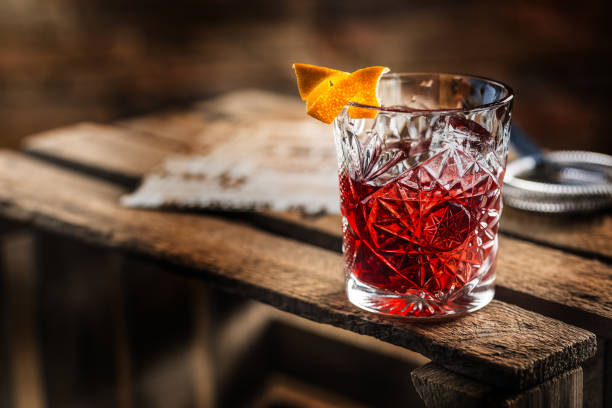If you think of white vermouth, your thoughts will likely be drawn to dry vermouth. This aromatized wine is also known as French vermouth. It can be made in many other countries. Dry vermouth is more herbaceous than botanical and sometimes even has a hint of saltiness. This makes it ideal for classic Martinis, where its frondy aromas and flavors are cleaved to the vodka or gin.
This is not the only type of vermouth that is “white” or almost colorless. If the label on your bottle says Bianco, blanc, you can expect the wine to be richer, sweeter, and act as a bridge between dry and sweeter red versions. The rounder body highlights the strong flavors inside.
Both styles can be enjoyed in any combination. They both contain a wide range of herbs, spices, and bittering ingredients.
How do you know which type to use? You need to consider the flavor of each type. There are exceptions: Most Martini variations use Bianco instead of dry vermouth. You can also find Negroni variants that call for dry.
Boissiere Extra Dry
It sounds very French. Although it was born in Mont Blanc, France, in the beginning, today Boissiere is made in Turin, northern Italy. Boissiere is a smooth, soft and creamy tasting coffee with a balanced snap to its botanicals. It has aromas of sweet blanched almonds and savory wormwood. There are also flavors of almond skin and olive pits. You can try it in a 50/50 Martini.
Carpano Bianco Vermouth
It is lower in alcohol than its dry sibling, but has the same family traits. You’ll notice the same grapefruit notes and grapey-ness as the dry bottle. This is likely to be Trebbiano, also known as ugni Blanche, which is the base of many vermouths and sometimes brandy. It’s rounder and more satisfying here, with a slight blanched-almond flavor. The spiciness is a bit stronger, but it retains the sweetness like a rubber band. This is a lovely wine on the rocks, with a touch of pink grapefruit zest.
Carpano Dry Vermouth
Like most vermouths, sweet or dry, the source is white grapes. Carpano’s dry vermouth has a grape-y ripeness that makes it playful and even tropical. There are also notes of ginger, apricot, and grapefruit juice to complement the predominant zest and juice notes. The dry vermouth is also sweeter than one might expect. However, this Italian bottle has a richness that balances the spicy and zippy notes that hit you towards the end.
Dolin Vermouth De Chambery Dry
Dolin is the cornerstone dry vermouth. It is made from ugni Blanche grapes and has a subtle, cool aroma that smells of lemon verbena and white lilacs. It’s bright and fresh with lots of intrigue. There is a hint of savory wormwood, gentle almond nuttiness, and a touch of chamomile. It is the preferred bottle of choice for Martinis professionals and many other industries.
Interrobang White No. 73
This semi-sweet Willamette Valley-made vermouth was made over 73 attempts. The white, which is just as good as its superb sweet counterpoint (which took 47 attempts), is a rich, complex pleasure on the palate. It’s all ginger, dried grapefruit, pith and pith. With a piquant zip, it can be enjoyed by itself or mixed into a gin cocktail. Oregon Riesling is the base wine. This is also where the wild-ginger note likely originated.

